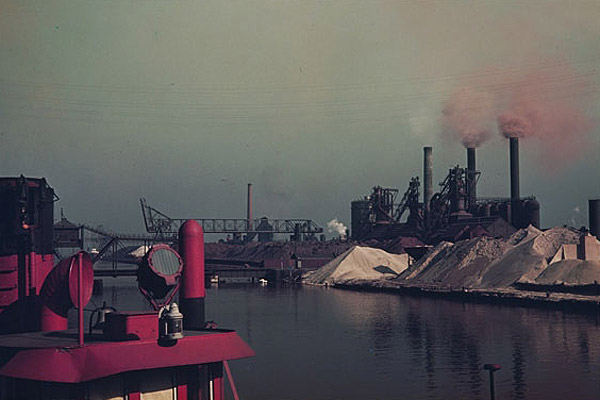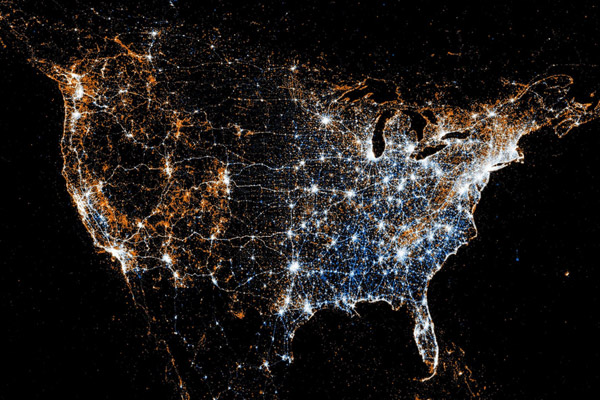
One of the most widely-read pieces that's ever been in Chicago, at least judging from how many times I've seen it on the Web, is Nora O'Donnell's profile of mysterious street photographer Vivian Maier and the discovery of her archives. And it's not just our piece; Alex Kotlowitz's essay on her for Mother Jones seems to come up again and again. I love her work, and the story behind it is compelling, but the persistence of it among so many other wonderful things fascinates me—perhaps it has something to do with our changing relationship to photography. With an infinite number of ways to share photographs and the miraculous ease of doing so (red dots are Flickr geotags)…

…the idea that a talent like Maier would stay so resolutely private, and shoot so obsessively and passionately for herself, adds a layer of artistic romanticism to her already evocative portraits.
Maier's work burst out of nowhere into a multimedia age primed for her work. So I've been kind of curious when the Web would rediscover Charles Cushman, again. Unlike Maier, the Chicagoan—shooting at around the same time as Maier, and it's wonderful to imagine them inadvertantly crossing paths—has been on the internet for awhile, thanks to the University of Indiana, which has maintained a vast archive of Cushman's work since 2003, an eternity in Web years. Now, with the publication of The Day In Its Color by Oxford University Press, his day is here again.
If you like Maier, Cushman makes an interesting comparison, as a gifted fellow amateur working many of the same streets. Maier worked in black-and-white, and her photographs are frequently candid, wry, and surprising. Cushman worked in preposterously vivid Kodachrome, and some of his work is, well, really Kodacromish: dreams of summer, all the world as a sunny day (Cushman had an eye for bathing beauties, particularly at Promontory Point in Hyde Park). Maier, for her distance and privacy, was pretty ethnocentric as a photographer; Cushman was interested in cities, industry, and landscapes as much as people, as Eric Sandweiss writes:
Any single place in the mid-twentieth-century American landscape can be found documented in greater detail elsewhere than it is in the slides of Charles Cushman. But in no other single place that I know of does the sheer range of those places—across space, across time, across the intermeshed functional elements of city, suburb, and countryside—receive a fuller treatment than it does in these pictures. Charles Cushman's sure compositional eye (he rarely took two exposures of the same scene), his meticulous note-taking and, most strikingly of all, his early commitment to working in color at a time when "serious" documentary work was done in black-and-white, all make this long-undiscovered collection a rich trove that can be mined for many years to come.
Maier, shot by shot, might be a more compelling photographer, but Cushman's voracious eye and use of Kodachrome gives us another way of looking at the city from the same time; Geoffrey Johnson has an introduction to Cushman, and a selected gallery that's a good place to start.
Photograph: Charles W. Cushman Photograph Collection, Indiana University Archives


